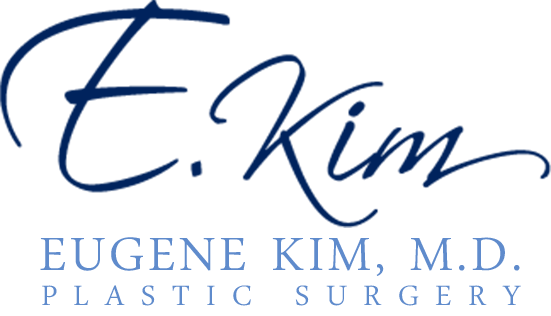 When it comes to breast surgery, many people are confused by the difference between breast revision and breast reconstruction. Breast revision is a procedure used to correct or improve the appearance of previous breast augmentation, while breast reconstruction refers to a surgical procedure to restore the shape and appearance of the breast after mastectomy or other trauma. Both procedures can have a huge impact on a woman’s self-confidence and sense of well-being, but it is important to understand the differences between them. In this blog post, we will be clearing up any confusion and helping you understand the differences between breast revision and breast reconstruction. Board-certified plastic surgeon Dr. Eugene Kim performs breast revision to patients in Beverly Hills, Los Angeles, Santa Monica, West Hollywood, CA, and surrounding communities.
When it comes to breast surgery, many people are confused by the difference between breast revision and breast reconstruction. Breast revision is a procedure used to correct or improve the appearance of previous breast augmentation, while breast reconstruction refers to a surgical procedure to restore the shape and appearance of the breast after mastectomy or other trauma. Both procedures can have a huge impact on a woman’s self-confidence and sense of well-being, but it is important to understand the differences between them. In this blog post, we will be clearing up any confusion and helping you understand the differences between breast revision and breast reconstruction. Board-certified plastic surgeon Dr. Eugene Kim performs breast revision to patients in Beverly Hills, Los Angeles, Santa Monica, West Hollywood, CA, and surrounding communities.
Defining Breast Revision and Breast Reconstruction
Breast revision and breast reconstruction are two distinct surgical procedures, each with its own purpose and outcome. Breast revision involves correcting or improving the appearance of a previous breast augmentation. This may be necessary if the initial surgery did not achieve the desired results or if there have been changes over time that have affected the appearance of the breasts. The goal of breast revision is to address any concerns or issues that have arisen since the initial surgery, whether it be implant malposition, asymmetry, or other complications. It can involve replacing or removing implants, adjusting the size or position of the implants, or performing additional procedures to enhance the aesthetic outcome.
On the other hand, breast reconstruction is a procedure aimed at restoring the shape and appearance of the breast after a mastectomy or other traumatic event. It is often performed in conjunction with the removal of breast tissue due to cancer or other medical conditions. Breast reconstruction can involve the use of implants, tissue expanders, or the patient’s own tissue, such as muscle and fat from the abdomen or back, to recreate a natural-looking breast mound.
While both breast revision and breast reconstruction can have a profound impact on a woman’s self-esteem and well-being, it is important to understand that they serve different purposes. Breast revision addresses aesthetic concerns related to a previous breast augmentation, while breast reconstruction aims to restore the breast after tissue removal. By understanding the distinctions between these procedures, individuals can make informed decisions about which option is most suitable for their unique needs and goals.
Causes of Breast Revision and Breast Reconstruction
Breast revision and breast reconstruction can be prompted by various causes, each unique to the individual’s circumstances.
In the case of breast revision, some common causes include dissatisfaction with the initial results of a previous breast augmentation surgery. This can occur if the implants were placed incorrectly, resulting in asymmetry or implant malposition. Other issues that may arise over time, such as changes in weight or pregnancy, can also necessitate breast revision. These factors can cause the breasts to change in shape, size, or position, leading to the desire for corrective surgery.
Breast reconstruction, on the other hand, is typically performed following a mastectomy or other traumatic event that has led to the removal of breast tissue. This is often due to a cancer diagnosis, but can also be a result of genetic factors or other medical conditions. In these cases, breast reconstruction aims to restore the appearance and shape of the breasts, providing women with a sense of wholeness and femininity.
It’s important to note that the causes of breast revision and breast reconstruction can vary greatly from person to person. Consulting with a board-certified plastic surgeon is crucial to determine the underlying causes specific to each individual’s case and to develop an appropriate treatment plan.
Who are the Best Candidates for Breast Revision and Breast Reconstruction?
When considering breast revision or breast reconstruction, it’s important to understand who the best candidates are for each procedure. The ideal candidates for breast revision are those who have previously undergone a breast augmentation and are dissatisfied with the results. This may include individuals who have experienced complications such as implant malposition, asymmetry, or changes in the appearance of their breasts over time. Candidates for breast revision should have realistic expectations and be in good overall health.
On the other hand, breast reconstruction is typically recommended for individuals who have undergone a mastectomy or have had breast tissue removed due to cancer or other traumatic events. Candidates for breast reconstruction should be physically and emotionally prepared for the process, as it can be a complex and lengthy journey. It is important for individuals considering breast reconstruction to have a positive outlook and a strong support system to help them through the recovery process.
Ultimately, the best candidates for breast revision and breast reconstruction are those who have a clear understanding of the procedures and their expected outcomes. It is important for individuals to consult with a board-certified plastic surgeon to determine if they are suitable candidates for these procedures and to develop a personalized treatment plan that aligns with their unique needs and goals.
Recovery After Breast Revision and Breast Reconstruction
Recovering from breast revision and breast reconstruction is an important aspect of these surgical procedures. While the recovery process can vary from person to person, there are some general guidelines to keep in mind.
After breast revision surgery, patients can expect some discomfort, swelling, and bruising. It is important to follow the surgeon’s instructions for pain management and to take any prescribed medications as directed. Most patients are able to resume normal activities within a few days, but strenuous exercise and heavy lifting should be avoided for several weeks to allow for proper healing.
Breast reconstruction is a more complex procedure, and the recovery time may be longer. Patients may experience soreness, swelling, and tightness in the chest area. The surgeon will provide specific instructions on post-operative care, such as wearing a supportive bra and avoiding certain movements that could strain the chest muscles. It is important to attend all follow-up appointments to monitor the healing process and address any concerns.
Throughout the recovery process, it is crucial to listen to your body and give yourself time to heal. Engaging in self-care activities, such as getting enough rest, eating a balanced diet, and staying hydrated, can promote healing and help alleviate discomfort.
Remember, every individual’s recovery experience will be unique, so it is important to communicate openly with your surgeon and follow their advice for the best possible outcome. With proper care and patience, you can look forward to enjoying the results of your breast revision or reconstruction and regaining your confidence and sense of well-being.
Risks and Complications of Breast Revision and Breast Reconstruction
While breast revision and breast reconstruction can have transformative effects, it is important to be aware of the potential risks and complications associated with these procedures. As with any surgery, there are inherent risks involved, and it is crucial to understand them before making a decision.
Risks and complications of breast revision may include infection, bleeding, scarring, and changes in nipple sensation. In some cases, revision surgery may be required if the desired results are not achieved or if complications arise. It is important to communicate openly with your surgeon about your goals and expectations to minimize the risk of dissatisfaction or further revisions.
Similarly, breast reconstruction also carries risks and potential complications. These may include infection, bleeding, implant rupture, and changes in nipple sensation. In some cases, additional surgeries may be needed to achieve the desired aesthetic outcome or to address complications. It is important to have realistic expectations and to understand that the reconstructed breast may not look or feel exactly the same as the natural breast.
As with any surgical procedure, there are risks associated with anesthesia as well. Your surgeon will discuss these risks with you prior to the surgery and take appropriate measures to ensure your safety.
It is important to consult with a board-certified plastic surgeon to fully understand the potential risks and complications of breast revision or reconstruction and to make an informed decision about whether these procedures are right for you. Your surgeon will provide personalized guidance and help minimize these risks through careful planning and monitoring throughout the process. By being aware of the potential risks, you can approach the surgery with realistic expectations and ensure the best possible outcome.
Contact the Office of Beverly Hills Plastic Surgeon Dr. Eugene Kim
Click here see more plastic surgery procedures and treatments performed by Board Certified Plastic Surgeon, Dr. Eugene Kim on patients in Beverly Hills, Los Angeles, West Hollywood, Santa Monica, CA and surrounding areas or call 310-271-6996 to schedule a consultation.
